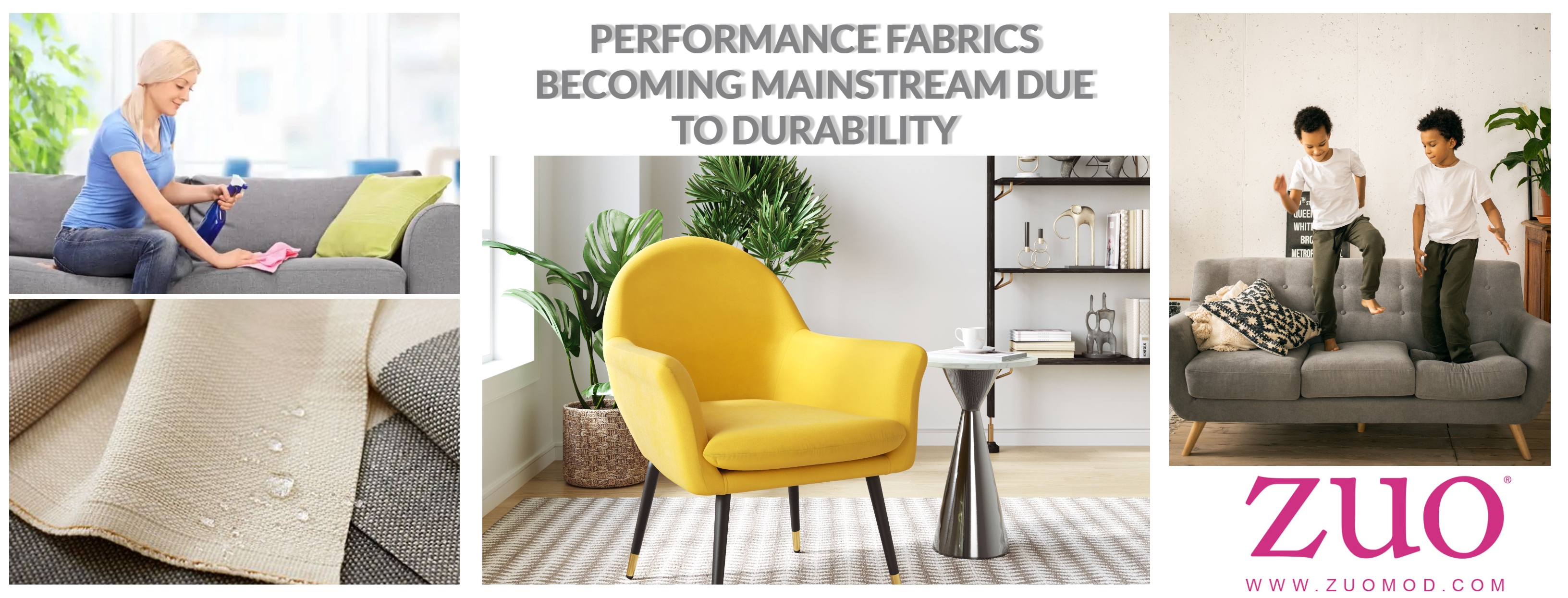No longer a luxury, performance fabrics becoming mainstream due to durability, ease of stain removal
No longer a luxury, performance fabrics becoming mainstream due to durability, ease of stain removal

Not all that long ago, performance fabrics were seen as luxury upgrades in the upholstery fabric world – reserved for upper-end furniture primarily in commercial settings.
But once manufacturers realized their stain-resistant and fade-resistant qualities resonated with consumers in all walks of life, performance fabrics charged into the residential upholstery market and began gobbling up market share. Pandemic-induced supply chain issues have slowed the growth spurt a bit during the past 18 months, but there’s little doubt that performance fabrics will keep getting larger slices of the upholstery fabric market in the foreseeable future.
During a panel discussion at the recent High Point Market, fabric guru Caroline Hipple, who is president of custom upholstery producer Norwalk Furniture, predicted that performance fabrics will have 90% of the market within 10 years.
Her prediction will surely raise some eyebrows, but she said the ease of cleaning such fabrics make the selection of a performance fabric almost a no-brainer – especially for consumers with children and/or pets.
Plus, she said it gives consumers the peace of mind to choose a light-colored fabric, knowing that it won’t be ruined by a spilled soda.
Although Zuo isn’t in the custom upholstery business like Norwalk, Zuo CEO Luis Ruesga sees a bigger role for performance fabrics in his product lineup, as well.
“Performance fabrics are more expensive than basic fabrics, but they’re such a great value,” Ruesga said. “They will last longer, and consumers can see how easy it is to clean them.”
Stain removal is so easy, in fact, that some performance fabrics today can be cleaned with bleach – the same bleach that will take the color out of most other fabrics in a heartbeat. (Anyone who has splattered bleach on their clothes during a cleaning project will know what I’m talking about.)
Fabric producers say they are able to achieve this by dying the yarn and adding stain-resistant properties before it is woven. Applying a stain-resistant top coating will certainly help in the short-term, but producers say those coatings will eventually wear off.
Ruesga sees performance fabrics being viable in residential and hospitality settings and believes their use will soon become the norm.
“I think it will get to the point where you have to have it,” he said. “With its cleanability and durability, there’s not much downside.”




